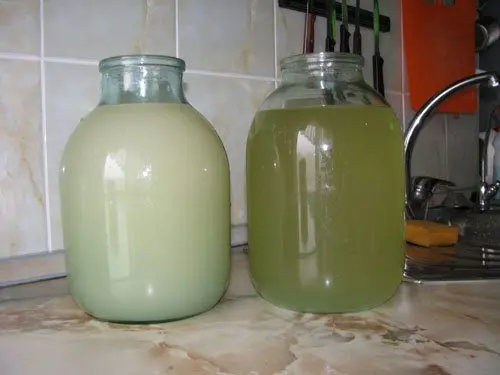Yeast residues can burn during the distillation process, spoiling the aroma and taste of moonshine, and more harmful substances are also “brewed”. To avoid this, the mash is clarified by one of the well-known methods: bentonite, hibiscus tea, gelatin or citric acid. But few moonshiners know that there is an equally effective and simpler way – clarification of mash with alcohol (vodka, moonshine).
Theory
Any yeast strain has a maximum alcohol tolerance (mash strength), upon reaching which the yeast ceases activity and sinks to the bottom. The problem is that it is not always possible to accurately calculate the optimal proportions of the mash.
Excess sugar is not processed by yeast and disappears, and the fermentation period increases. If sugar is not enough for the yeast to develop the desired concentration of alcohol, autolysis will begin – the process of self-fermentation of yeast with the release of harmful substances. To “lull” active yeast immediately after fermentation, you need to raise the strength of the mash by 3-4% by adding pure ethyl alcohol, vodka or moonshine. As a result, the yeast will sink to the bottom within 12-24 hours, where it will be easy to collect, and the mash will become almost transparent.
The advantage of the method is its simplicity: it is not required to buy, dilute, and then add bentonite and other yeast-precipitating substances.
Disadvantages:
- clarification with vodka and alcohol is suitable mainly for sugar brews, since for fruit and grain brews only “tails” and “body” obtained from the same raw materials can be used, otherwise the organoleptic of the drink will suffer;
- a fixing drink requires a relatively large amount, for example, to clarify 10 liters of mash with a strength of 12%, you need 1,2 liters of forty percent vodka or moonshine. It is clear that after distillation this volume will return, but not everyone has such reserves.
dosage
To guarantee the start of the clarification process, you need to raise the strength of the mash by 3-4%. To do this, you need to find out the fortress after fermentation using a saccharometer or wine meter.
If there is nothing to measure the strength of the mash and the initial sugar content is unknown (1% of the fermented sugar in the wort gives about 0,6% alcohol), then the easiest way is to take the initial strength of the mash – 12% for all types of yeast (sourdough, wine, dry and pressed bakery), except for alcohol.
In the case of alcohol yeast, you should study the manufacturer’s instructions, which indicate the maximum possible strength of the mash, for some strains this value reaches 16-18%.
You can calculate the amount of vodka or alcohol to clarify the mash using the formula:
V = volume of mash * (required strength – available strength) / (strength of the fixing base – required strength).
The volume is expressed in liters, the fortress – in percent. For example, if there are 10 liters of mash with an initial strength of 12%, then for clarification you need to raise the alcohol concentration to 15%, for this you need 0,769 liters of vodka (40% vol.): 10 * (15 – 12) / (40 – 15) u0,76923d XNUMX l.
Attention! Consciously choose a fixing drink. Ethyl alcohol and vodka are only suitable for clarification of sugar mash. Strong alcohol should be from the same raw materials as grain and especially fruit mash, otherwise the aroma and taste of the drink will deteriorate after distillation. It is optimal to use the “tails” left over from the last time.
How to lighten mash with alcohol (instruction)
- Drain the mash that has played out from the sediment into another container.
- Degas mechanically: depending on the volume, stir by hand, with a wooden spatula or with a drill with a nozzle, until the smell of carbon dioxide is felt. Degassing contributes to the rapid precipitation of yeast, increasing the efficiency of clarification by 2 times.
- Calculate the required amount of fixing base according to the formula. Add vodka (alcohol, moonshine, “tails”) to the mash.
- Mix, seal tightly. Leave for 12-20 hours in a dark room (cover) at room temperature or in the cold (preferably, but not below zero).
- Carefully drain the clarified mash from the sediment through a tube into a distillation cube. Then you can immediately start distillation.










